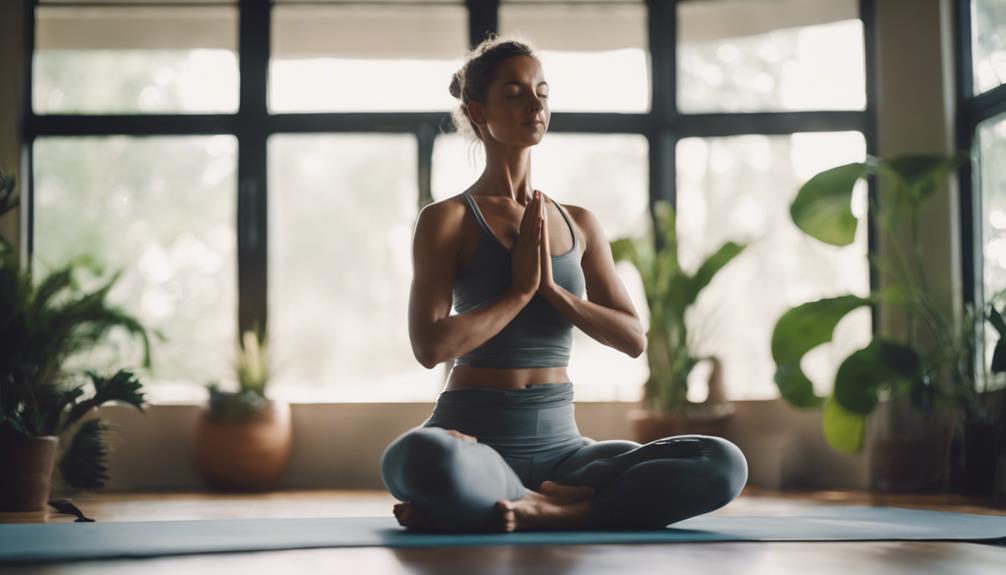What Is The Ideal Thickness For A Yoga Mat

When it comes to practicing yoga, one of the most important pieces of equipment you’ll need is a yoga mat. However, with so many options available, many practitioners wonder, “What is the ideal thickness for a yoga mat?” In this detailed guide, we will explore the different thicknesses of yoga mats, their benefits, and how to choose the best one for your practice.
Understanding Yoga Mat Thickness: Why It Matters
The thickness of a yoga mat can significantly impact your practice. Generally, yoga mats come in various thicknesses, ranging from 1/8 inch (3 mm) to 1/4 inch (6 mm) and even thicker options available. The ideal thickness for a yoga mat varies depending on personal preference, the type of yoga practiced, and individual body needs. Thicker mats provide more cushioning and support, which is beneficial for beginners or those with joint issues. Conversely, thinner mats offer better stability and a closer connection to the ground, making them ideal for advanced practitioners and styles like Ashtanga or Vinyasa.
Standard Yoga Mat Thickness: 1/4 Inch (6 mm)
A standard yoga mat thickness is typically around 1/4 inch (6 mm). This thickness strikes a balance between cushioning and stability. It provides enough padding to support your joints during poses while still allowing for a firm grip on the ground. This thickness is often recommended for beginners who may need extra support as they learn to balance and hold poses. Additionally, 1/4 inch mats are versatile for various yoga styles, including Hatha and Iyengar, making them a popular choice among practitioners.
Thicker Yoga Mats: Benefits and Ideal Use Cases
Thicker mats, often measuring 1/2 inch (12 mm) or more, are excellent for individuals who require additional cushioning due to joint pain or discomfort. These mats are particularly beneficial for restorative yoga practices, pregnancy yoga, or for those who are new to yoga and may struggle with balance. The extra cushioning can help alleviate pressure on sensitive areas like the knees, wrists, and hips, allowing for a more comfortable experience. However, it’s important to note that while thicker mats provide more comfort, they can sometimes compromise stability in standing poses, so it’s essential to consider your practice style.
Related Posts:
Thinner Yoga Mats: Pros and Cons
On the other end of the spectrum, thinner yoga mats, around 1/8 inch (3 mm), are favored by advanced practitioners who prioritize stability and a direct connection to the ground. These mats are often preferred in styles such as Ashtanga, Power Yoga, and Bikram, where balance and precision are essential. While thinner mats can enhance your sense of balance, they may not provide adequate cushioning for everyone. Those with joint issues or a history of injuries might find thinner mats uncomfortable, especially during prolonged sessions.
Choosing the Right Thickness for Your Yoga Style
When contemplating the ideal thickness for a yoga mat, it’s crucial to consider the type of yoga you practice. For example, if you practice restorative or Yin yoga, a thicker mat may be beneficial to support long-held poses. In contrast, if you are engaged in dynamic styles like Vinyasa or Hot Yoga, a thinner mat may serve you better, promoting better balance and alignment. Knowing your yoga style allows you to make an informed decision about mat thickness, ensuring that you invest in a mat that enhances your practice rather than hinders it.
Personal Factors to Consider: Body Type and Experience Level
Aside from yoga style, personal factors such as your body type, experience level, and any existing injuries should also influence your choice of mat thickness. For instance, beginners or individuals with larger body types may benefit from the extra cushioning of a thicker mat as they build strength and stability. Conversely, experienced practitioners who have developed a strong sense of balance may prefer the closeness to the ground that a thinner mat provides. It’s essential to listen to your body and consider your specific needs when determining the ideal thickness for your yoga mat.
Material Matters: How Thickness and Material Work Together
The material of a yoga mat can also play a significant role in how thickness affects your practice. Common materials include PVC, TPE, natural rubber, and jute, each offering different levels of grip, durability, and cushioning. For example, a thicker natural rubber mat can provide excellent cushioning and grip, making it suitable for those who need extra support. In contrast, a thinner PVC mat may be less forgiving on the joints but offers superior grip for advanced practitioners. When selecting a mat, consider both thickness and material to find the perfect match for your yoga journey.
Conclusion: Finding Your Perfect Yoga Mat Thickness
In conclusion, the ideal thickness for a yoga mat varies greatly among individuals based on factors such as practice style, body type, and personal preferences. While standard mats at 1/4 inch (6 mm) cater to a wide range of practitioners, thicker and thinner options serve specific needs and styles. Ultimately, the best way to determine the ideal thickness is to try out different mats and see which one feels most comfortable and supportive during your practice. By carefully considering your unique requirements and experimenting with various options, you can find the perfect yoga mat that enhances your practice and promotes overall well-being. Happy yoga-ing!28 Day Chair Yoga For Seniors